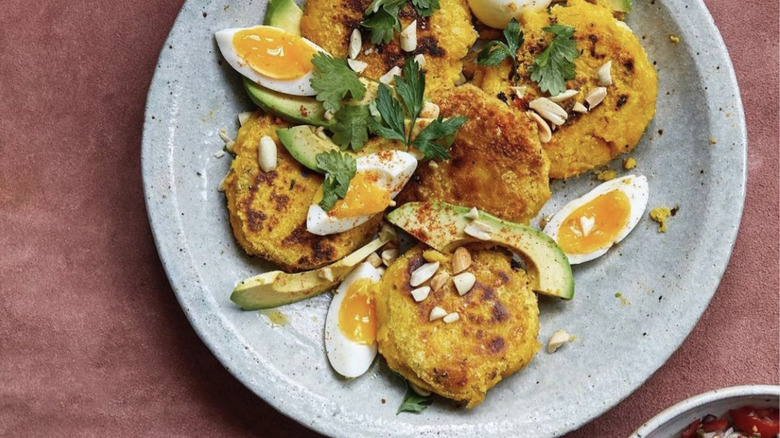Oto: The Fried Patties That Make Yams The Star
There are all sorts of starches in the world — potatoes, sweet potatoes, bread, rice, polenta — the options here are pretty extensive. But one thing on which virtually every cuisine seems to agree when it comes to starches is that frying them is never a bad idea. This is the principle behind everything from hash browns to latkes to sweet potato fries to fried rice to crispy polenta: Fry that sucker up and you're going to have a good time.
This principle is so universal that it extends far beyond the dishes that are familiar to most Americans. Take, for instance, oto, a Ghanaian dish. You may not have tried oto before, but if you have the slightest interest in fried food, once you find out what it is, you're going to want some. It starts with the puna yam and transforms it into a delicious fried patty topped with a soft-cooked egg — a perfect combination if ever there was one.
Oto has huge cultural importance to Ghana
It's important to understand that puna yams are not sweet potatoes. Though people often use the terms interchangeably, sweet potatoes and yams are two totally different tubers. Puna yams, also known as white Guinean yams, are quite distinct from the sort of yams typically eaten in North America; though they have a starchy, slightly sweet quality like yams you'd find in the U.S., they're also absolutely huge, growing up to three feet long. It's a great crop for farmers because of its resistance to disease and large crop yields, and it's a common part of West African cuisine.
And one of the best — and most culturally significant — dishes you can make with puna yams is oto. Though oto can be eaten at any time, it's often associated with special occasions like the New Year, weddings, or births (much like how latkes are often associated with Hanukkah in Jewish cuisine). And while the puna yam forms the base of oto, the egg is just as much of an important component.
Cooking oto involves multiple steps
Preparing oto is a multistage process not entirely dissimilar to that of other fried starch patties in disparate global cuisines. First, chopped puna yams are boiled with brown sugar for around 20 to 25 minutes, bringing out their natural sweetness (a similar principle is often applied to sweet potatoes for sweet potato casserole). While they're still steaming hot, they're then mashed, with add-ins like oils, garlic, seasonings, and corn flour tossed in based on one's personal preference. Once the mixture is fully incorporated, it's cooled and formed into thin, round patties. From there, oto are fried pretty much exactly how you'd fry a potato pancake. The last step is one of the most crucial: Each oto is topped with at least some amount of soft-cooked eggs, so the yolks can seep into the patties and deliver a rich, velvety texture and flavor.
If you can get your hands on some puna yams (or if you have a local Ghanaian restaurant), you should really try some oto. Expanding one's culinary horizons is important — and after all, who doesn't love a fried starch patty?


